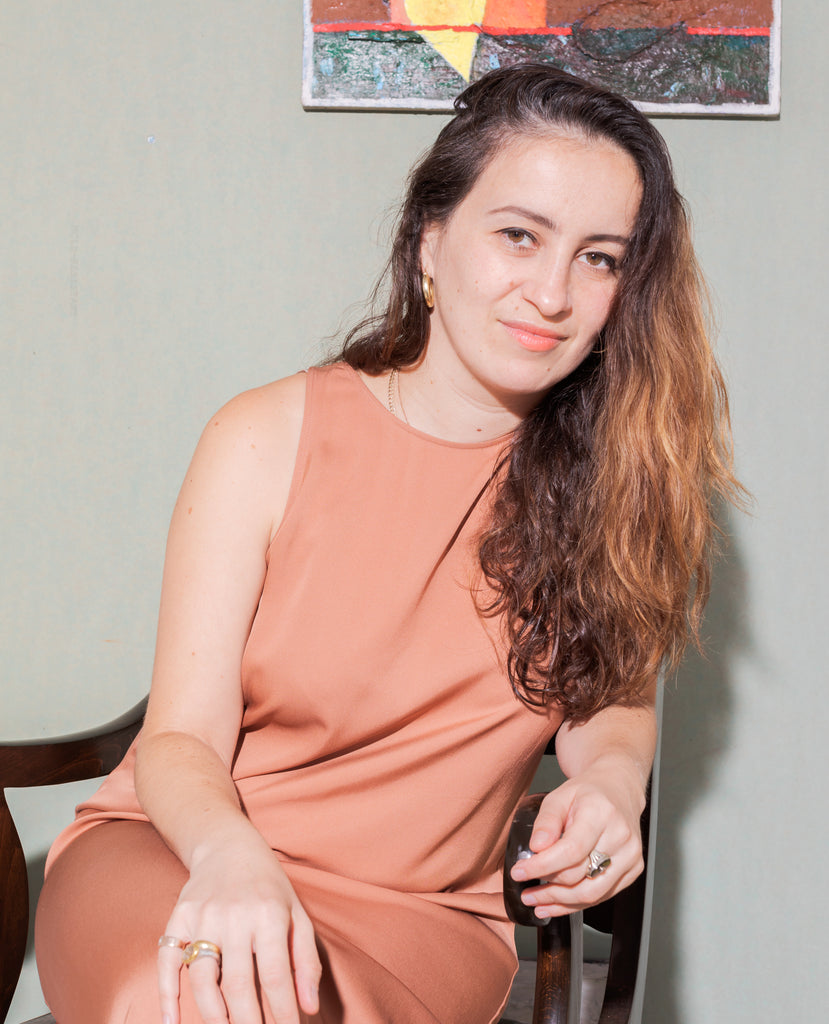
This month NBB Gallery had the honor to talk with Yevgeniya Baras, an artist who is also a university professor. Even before graduating from the Art Institute of Chicago in 2007, Baras devoted herself to making art from deeply personal perspective. In an interview accompanying her first solo exhibition at NBB titled "Change of Heart" opening on November 17, we asked Baras about the specific materials she uses for her canvases as well as how teaching has impacted her art practice.
It is interesting how you interact with your artwork, where inspiration seems fluid and the painting is completed over a sometimes extended period of time. How do you determine when a painting is finished?
There is an immediate feeling that a painting may be finished but I check that feeling by allowing the work to stay around for many months in the studio. I turn the finished pieces around and once in a while I peek at them to check my gut feeling that they are done. If there isn’t anything else I can say two months later, five months later then the piece can leave the studio. If there isn’t anything that is pestering me. Intuition is an important aspect of all realms of my work including the decision of whether a piece is done.
My process is cumulative and the work is built over long periods of time. Paintings build on each other, and learn from interacting with one other. That too helps me decide whether something is finished: when I consider work in conversation with its neighbors.

Your canvases have a sculptural almost tangible quality to them. What materials do you like to use to create their three-dimensional appearance?
I use found objects. These objects can come from places that I am visiting, traveling through, they can be gifts as well. They are ways to commemorate an event, a person, a place. Other materials like wood, paper mache, foil and yarn reference my interest in craft processes. And oil is the connector. I always paint in oil on top of all of my paintings so that objects are buried within paint. The process of burial of objects is talismanic in its nature.
The relief quality of the work is many layers of paint and any of the above materials. I think of materiality as an important part of the content of my work. Also I think of the history of relief as a way to tell a story and a different way of interacting with the viewing space.
You immigrated with your family to the U.S. from the former Soviet Union as a teenager and work with this personal experience. In what ways are your past and these memories embedded within your art?
I think when one immigrates it is something that changes the person, it stays with them. It is part of my conscience, a feeling that I am of hybrid cultures. I speak and think in numerous languages on a daily basis. I translate. The art I saw as a child, and then as a teenager and as an adult spans many centuries and cultures. I was born in a place that no longer exists. The landscape and architecture that surrounded me when I was small and now are very different. I contain both: the complexity and hardship around ideas of migration, home, belonging, communication, nostalgia but also the opportunity to rewrite a life, to have a new chapter, to have more wells to make art out of. Of course all this is woven into the process of making work. This is part of many other wells of inspiration that exist for me.

For the past 16 years you have been teaching painting but also art history. How did your theoretical knowledge shape your artistic work and practice?
I think about history a lot, familial history and world history. It is reflected in my painting through layering/materiality, the time that passes in the process of making the work, themes I consider when researching, the way that the objects I make are linked to the past/the ancient and the current. This interest in history is reflected in my teaching.
Both my studio classes as well as art history classes are considering the idea of lineage (who do you as an artist link yourself to; that can be a Mesopotamian sculpture, jewelry made by Calder and an artist working in the neighboring studio building) and why? What interests you in these relationships and how these relationships enrich your work and ability to communicate and motivate your curiosity as an artist. Also both history classes and studio classes encourage research. Working hard in the studio is one important aspect, seeing how work leads to work. Another aspect is how you reach outside of the studio for inspiration, what you allow to move you. That is what has built a desire in me to teach art history. Teaching is such a human activity. It is about building community and it's about exchange. It always gives back. I return from the classroom inspired by the dialogue with my students; it's a kind of boomerang.
© Photos: Maggie Shannon / NBB Gallery
